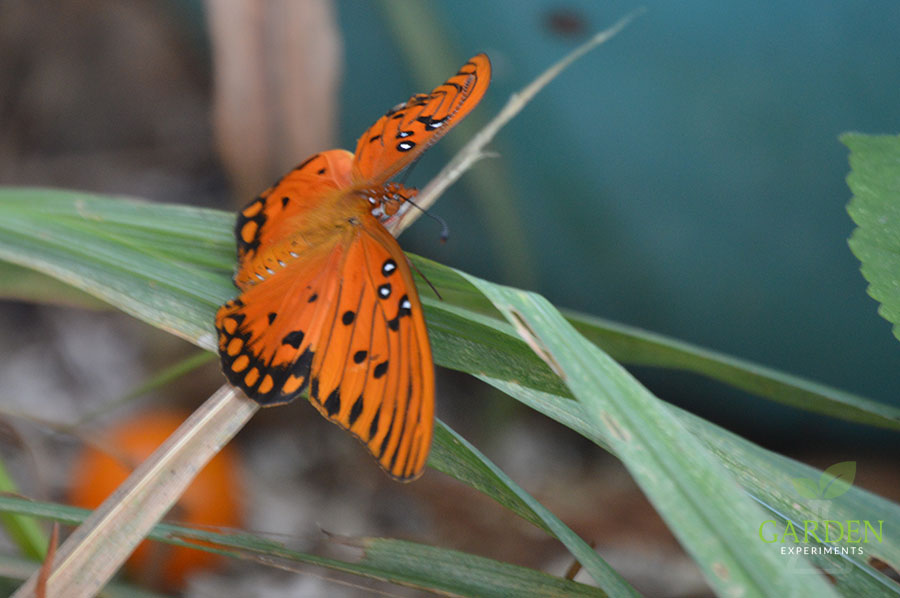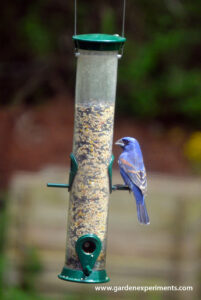Getting outdoors to enjoy some fresh air, to get a little exercise, and to find something beautiful in nature that makes us smile can be so important. So gather up your family and get outdoors! Try one of these five outdoor activities to explore your backyard, your neighborhood, or just about anywhere!

1. Become a citizen scientist and explore the animals and plants in your backyard
Your backyard is full of creatures and plants – birds, frogs, trees, weeds, wildflowers, snails, earthworms, lichens, mushrooms, so many things big and small. You can record what you see and share it with other citizen scientists to help record the biodiversity of your backyard.
Through the iNaturalist website or iNaturalist app you can record your observations, get help identifying things, and learn more about nature.
iNaturalist is an online social network of people sharing biodiversity information to help each other learn about nature. You can share your information using their app or website.
Video tutorials on how to add an observation, how to take good photos, and how to use the ‘identify’ page are available here: https://www.inaturalist.org/pages/video+tutorials
So, go have some fun exploring the nooks and crannies of your own backyard.
Here are some of the backyard wildlife and plants that I have discovered in my own yard.





2. Have a nature scavenger hunt in your backyard (for kids)
There are tons of free online resources for a nature scavenger hunt. You can search for colorful leaves, rocks, bird feathers, flowers, seeds, and so much more. So, grab a bag of any kind, print out the scavenger hunt list, grab a pencil, and go! Here are some of my favorite nature scavenger hunts:
- Tara Wildlife nature scavenger hunt
- Teaching Mama’s spring scavenger hunt
- Lindsey Blogs’ back yard scavenger hunt
3. Start watching birds or hone your birdwatching skills
There are many different birds who may visit your back yard. If you have bird feeders up or a bird bath, you will have a great vantage point.
Bird watching is fun for all ages. You can do it just from a window in your house or if you have binoculars, you can get an even closer look to birds that are further away.
There are some great resources online to help you learn more about these birds and learn how to identify them by sight and by sound.
If you’re new to bird watching, try spotting a couple of the most common backyard birds that really stand out because of their colors or size. For example, some of the most common backyard birds in the southeastern U.S. include:
Common backyard birds you might see in your backyard
- Blue jay – with bold blue feathers and a crest on its head, the blue jay really stands out
- American robin – robins have red breasts and are one of the first birds to show back up in spring
- Northern cardinal – the bright red feathers on a male cardinal make them easy to identify
- Northern mockingbird – this ubiquitous bird has many, many songs
- Carolina chickadee – these cute little guys have a black head and throat, and white on the sides of their heads
- Mourning dove – these doves are large and have a unique shape; they also are frequently found on the ground
- House sparrow – while this is a common backyard bird, there are many brown colored birds that may compare
- House finch – a smaller bird with red feathers, he really stands out
- Red-bellied woodpecker – with black and white striped feathers and a red head, this bird really stands out
- Northern flicker – a spotted belly, red cheeks, and a large size makes this bird a good one to identify
Birding Resources
Two great resources for learning about birds and birdwatching include the Audubon Society’s Bird Guide and The Cornell Lab of Ornithology’s All About Birds.
There are some great apps for identifying birds and their calls too:
- SongSleuth – This app will help you identify bird songs
- Merlin Bird ID – overall bird identification app
- Raptor ID – identification for raptors
4. See the stars at night – try stargazing and learn the constellations with an app
All of us are usually so busy, I bet it isn’t often that you step out of your door at night, take a deep breath, and look up at the night sky. The stars on a clear night are pretty darn amazing.
If you’ve ever wanted to learn the constellations and experience stargazing, your back yard is a perfect place to try it out.
Grab a blanket, a flashlight, a warm jacket, and your phone, download one of the free stargazing apps mentioned in this article : https://www.forbes.com/sites/jesseshanahan/2018/05/09/the-best-free-stargazing-apps-of-2018/#765adcc0185d, and get to looking up at the sky.
5. Learn how to identify butterflies in your backyard
Now that spring flowers are really starting to bloom, you’ll begin to see more and more butterflies in your backyard.
Have you ever wondered what each butterfly is called? What its host plants and food plants are? Now is a great time to discover more about the colorful butterflies that visit your yard and garden.
One of my favorite backyard butterflies is the Gulf Fritillary. It’s pretty common in many places in the southeastern U.S. Similarly, you will probably also cloudless Sulphur butterflies which are also common.

Here are some of my articles that provide information about the plants that butterflies use for hosting their caterpillars and those they use for food:
- 30 Butterfly Host and Food Plants for Your Garden
- 5 Great Plants for a Butterfly Garden
- Food Plants for Butterflies and Caterpillars
Online Butterfly Resources
There are some great resources online for identifying butterflies and caterpillars and learning more about them. For instance, these are some of my favorites:
- Butterflies and Moths of North America
- How to Tell a Moth from a Butterfly
- Gardens with wings
- Butterfly identification
- Online guide to the butterflies of the Mississippi Delta
6. On a rainy day, take a virtual tour of America’s great National Parks
We have had lots of rainy days lately. As a result, you might need something to do when you’re stuck indoors. When you’re stuck in the house but need a nature break, check out Google Earth’s virtual tour of the National Parks of the United States.
From Acadia National Park to Zion National Park, you can visit 31 parks and see these natural wonders. I’ve always wanted to go to Death Valley and Mesa Verde – so now’s my chance to see it!
Each park has a series of 360-degree photos from specific locations, usually scenic views, within the park. You can drag your mouse around to view the spot from all angles.
I took a look at the tour for Acadia National Park which focuses on the Precipice Trailhead. Although it’s quite an amazing view, and not one I would probably take in person (those heights!).
Even though it’s a virtual visit, it’s surprisingly relaxing. So, sit down at your computer, take a deep breath, and imagine yourself in these amazing parks.


